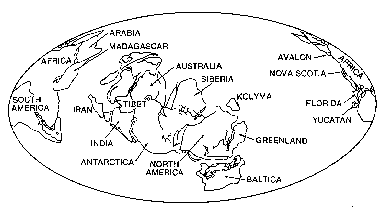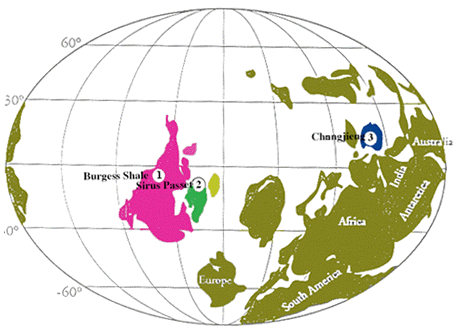Continental Configuration


Magnetic grains in rock record the position of the magnetic poles of the Earth
at the time when igneous rocks are quenched or in metamorphic rocks heated
to a 450 degrees Celsius then cooled.
Sedimentary rocks carry a weaker paleomagnetic signature. However, paleomagnetic
data, biostratigraphic and lithostratigraphic correlations help geologists
reconstruct early continental configurations.
Compare Neoproterozoic continental
configurations (left) with Cambrian continental configuration (right). As in Triassic time, a supercontinent was
breaking up.
Cambrian map modified from The Fossils of the Burgess Shale

